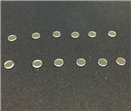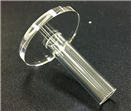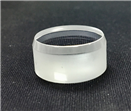

Time:2024-07-11
Sapphire watch mirrors, as a shining pearl in the field of watches, have an extremely complex and delicate manufacturing process, similar to sapphire in terms of material, hardness, transparency, and luster. In order to ensure the quality of the watch mirror, a series of rigorous treatments are required during the production process.
The selection of raw materials is a step in the production of sapphire crystal mirrors, with alumina as the main raw material and high purity requirements. Manufacturers need to extract high-purity alumina powder from natural ores or industrial waste, and remove impurities such as iron oxide and titanium oxide from it. These impurities not only affect the transparency of the mirror, but may also affect its hardness and durability. The next step is the melting process, where high-purity alumina powder is melted at high temperatures to form transparent liquid alumina. This step requires strict temperature and time control to ensure that the alumina melts without introducing new impurities.

The molten aluminum oxide liquid needs to undergo precise molding treatment, and manufacturers will use molds to cast the liquid aluminum oxide into the preliminary shape of the mirror. This process requires high precision and stability, as any slight deviation may result in the shape of the mirror not meeting the requirements. The formed watch mirror needs to be cut and polished. Cutting is the precise cutting of the preliminarily formed watch mirror according to the design size, while polishing is the removal of burrs and unevenness on the surface of the watch mirror, making it smoother and more transparent. This step requires the use of precision mechanical equipment and skilled technicians to complete.
After cutting and polishing, the watch mirror still needs to be polished. Polishing is the process of using a polishing machine and polishing paste to rub the surface of a mirror, making it smoother, smoother, and more glossy. Polishing is one of the key steps in making sapphire watch mirrors, as it directly affects the appearance and quality of the mirrors. In addition to the physical treatment mentioned above, chemical treatment is also required to enhance its hardness and durability. A common method is ion exchange treatment, which replaces some of the aluminum ions in the mirror with other harder ions (such as yttrium ions) to increase the hardness of the mirror. This treatment can make the mirror less susceptible to damage when scratched or impacted.
The production process of sapphire watch mirrors is a complex process that integrates physical, chemical, and mechanical technologies, and each step requires high precision and stability. After production, strict quality inspection is required. Manufacturers will use various instruments to test the hardness, transparency, thickness, shape, and other indicators of the watch mirror to ensure that it meets quality requirements. Only watch mirrors that pass quality inspection can be used to manufacture watches.






Tel
Mobile phone
Customer service
TOP